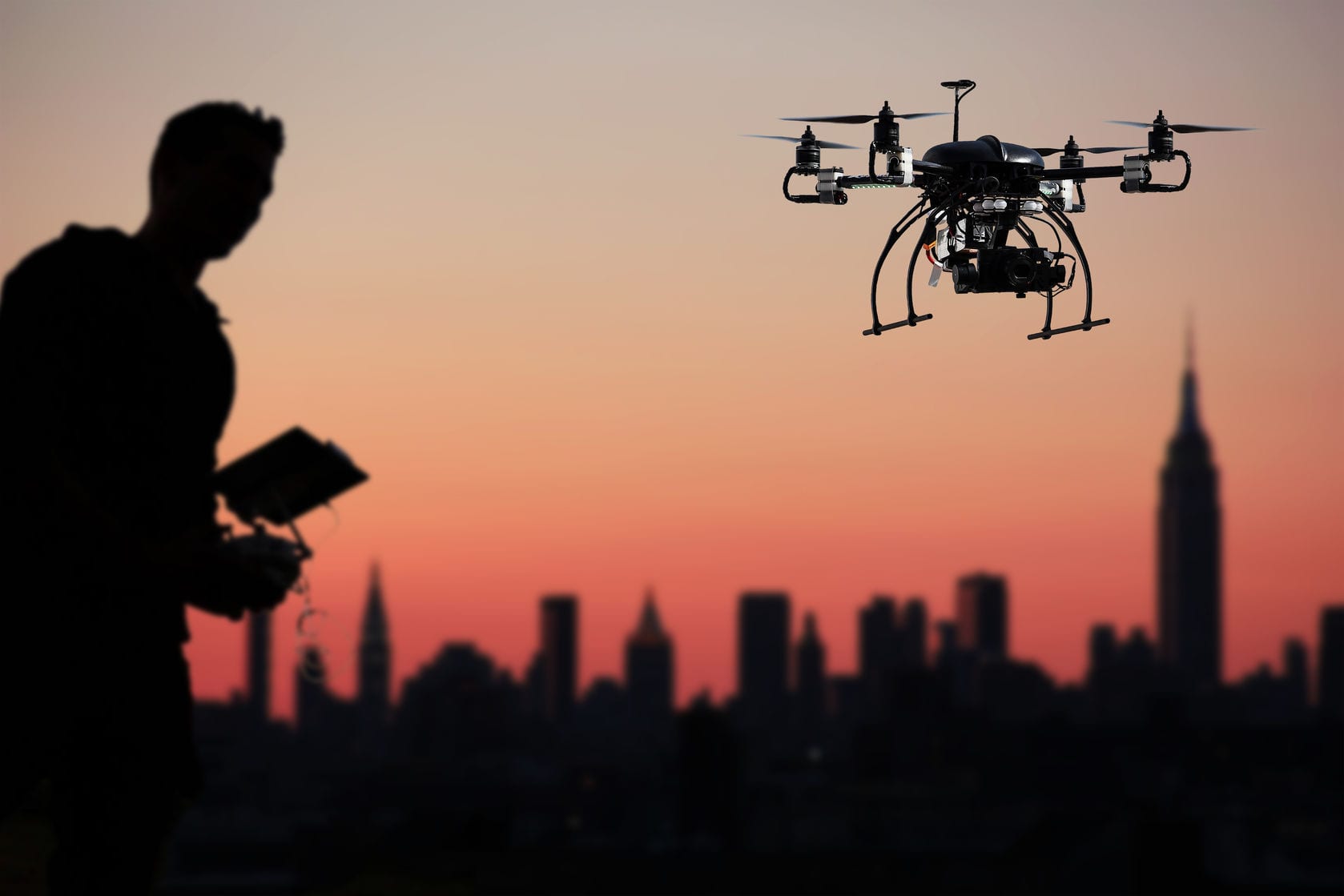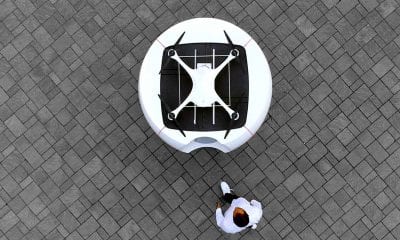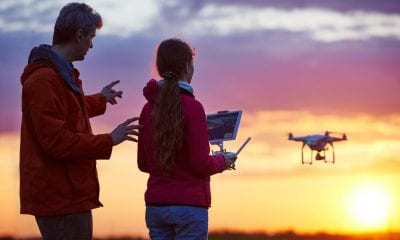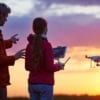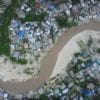Drones in Journalism
The advent of drones has dramatically altered the approach to a multitude of complicated tasks across the commercial, recreational and humanitarian sectors. Their flexibility, ease of operability and relative cost benefits has spurred their increased adoption across industries. Journalism, however, is one sector that is yet to see extensive use drones in gathering news and information, despite the seemingly obvious advantages they offer. We explore why.
Advantages
Unmanned Aerial Vehicles (UAVs) or drones offer certain specific advantages common across any domain of use:
- Flexibility – Being lightweight and controlled remotely, drones have the flexibility to reach inaccessible areas quickly
- Easy maneuverability – Drones can be easily maneuvered, and can thus provide multiple points and angles of view
- Safety – Being above the ground and unmanned, drones are a safer option when the target area is a difficult and/or dangerous terrain or during an emergency such as earthquake or fire
- Cost benefit – Operational costs are significantly lower when compared to manned aircrafts. On a per hour basis, running costs of a drone with high-end camera equipment is approximately 2/3rd of that of a manned helicopter
- Technology advancement – Advances in drone technology has set them apart from potential alternatives. The use of high-end cameras, communication and navigation devices mean that drones can now effectively multitask, thereby further enhancing their value to users
More specific to journalism, drones can capture and live stream video data to ground base stations. With the exponential rise in online video consumption, there is a marked shift in dissemination and consumption of news and entertainment. The ability to provide consumers with unique video content can prove to be a game changer. Drones can also widen the scope of eyewitness accounts, accessing places that are too difficult or dangerous for human coverage. Use of infra-red cameras, sensors and LED lighting can allow audio and video recordings at night time, a major step up in information collection capabilities for journalists.
Drones have the capability to capture panoramic view of affected areas during floods and earthquakes. Real-time data from farm drones can provide insights on weather and crop growth, aiding the local farming community.
As news agencies around the world start taking cognizance of the benefits of using drones, we are likely to see more number of drones deployed in the sky to gather news and other information.
Initial uses of drones
Back in 2012, the FAA (Federal Aviation Administration) in the US allowed drones to be flown in designated areas and that too only by a licensed pilot for a manned aircraft. This came after the University of Nebraska-Lincoln (UNL) flew a drone over a dry river bed to cover drought in local areas.
CNN was one of the first news agencies to utilise a drone for news reporting and was involved in the initial efforts (along with the FAA) to determine what role UAVs could play in journalism, while BBC news used its first drone in 2013. In mid-2016 CNN started its own aerial unit. Among others, one of CNN’s drones helped find earthquake-affected villages in Nepal, enabling local authorities to provide humanitarian relief to the affected people.
Concerns
The biggest impediment to a wider adoption of drones in journalism is the complex regulatory environment surrounding the use of drones, besides ethical issues surrounding privacy concerns. Other concerns that have been raised include drones being used for policing purposes and safety hazards, especially when used in populated areas. Some industry members believe that a lot of the negative opinions regarding drones are borne out of fear.
Flying of drones is regulated by the aviation authority in each country. Regulations may vary from country to country, making it difficult for global media organisations to scale up their usage of drones. There have been efforts to harmonise regulations across countries.
Ethical considerations are significant as well, with privacy concerns high among citizens. Given the advances in technology and remote controlling of drones, there are genuine concerns over their impact on people’s privacy. Public opinion remains a major hurdle towards a broader acceptance of drones.
There have been multiple instances of private landowners banning the use of drones over their properties. Drones, with their high-end cameras can easily capture unrestricted views of people and their property, which can subsequently be misused. The risks are similar to concerns over satellite images and have led to lobbying in favour of tighter regulations and transparent approval procedures.
Local and country restrictions remain strong, while permissions from authorities can be slow. Laws regarding the use of drones are still evolving, even as journalists continue to adapt to changing requirements.
Recent Developments
Questions remain over the ethical and legal aspects of flying drones, including its use in journalistic endeavours.
The College of Journalism and Mass Communications, UNL partnered with the Poynter Institute to conduct the first ‘Drone Boot Camp’ for journalists in 2016. The workshop helped journalists learn how to take the aeronautical knowledge test, the current regulatory requirement to fly a drone. The primary focus of the training was to educate the participants around privacy concerns. The initiative has expanded significantly, with the National Press Photographers Association and DJI joining the initiative, as nearly 400 journalists learnt about flying drones safely and legally.
2017 saw part 107 licenses being issued in the US. There are still significant limitations to what one can do and what one cannot. Journalists are still not allowed to fly at night or over people, which severely limits the kinds of news that can be covered or aided by drones. The FAA is also said to be working actively with the news agencies. As a result, we saw significant use of drones during the hurricane season.
In October, CNN became the first agency to receive a waiver to fly over people, though the permission was only for a very lightweight drone (a Snap UAS, weighing 1.37-pound). Blanket permission for larger or more capable drones is said to be still some way off. Such waivers are also likely to remain limited to major news agencies in the short run, given their financial resources.
An FAA proposal to synchronise federal and local laws could remove some of the current limitations in the future. Restrictions on flying over people have remained over public safety concerns, even as Homeland Security is supposed to have expressed concerns over the potential for weaponizing drones.
Members of DroneJournalism.org have attempted to create a code of ethics for using drones in journalism. Among others, the code proposes to use drones for gathering information only when other relatively safer alternatives are unavailable.
The Future
While technology is steadily changing the way information is being collected and disseminated, use of drones in journalism remains in its nascent stages. However, given the inherent advantages of drones, as seen from their utilisation across various fields, the potential for growth is significant.
The FAA recently announced that an instant airspace waiver will be put in place in 2018, where permissions will be granted within a few minutes. Enabled by a system called the LAANC (Low Altitude Authorization and Notification Capability) program, users can enter the details of their proposed flights (coordinates, time, duration, altitude, etc) through a mobile app and apply for a waiver. The FAA has also developed a map to indicate the restrictions that flyers may encounter during their flights. This could be a significant development for the journalism industry, as covering breaking news using drones may finally become a reality.

